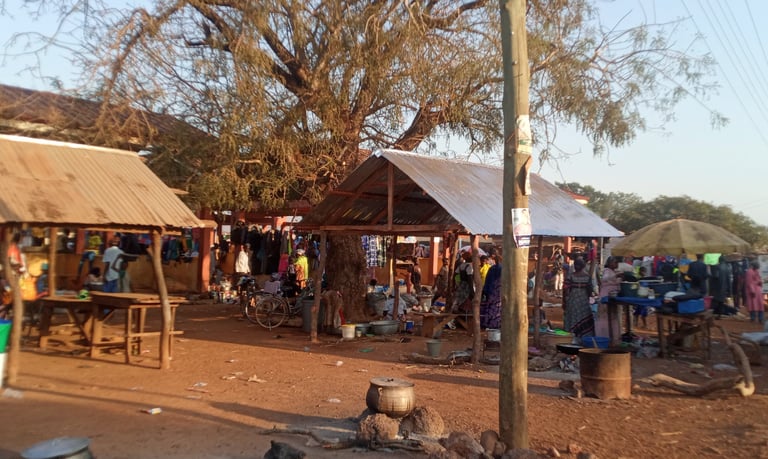The Vibrant Heart of Rural Life: A Glimpse into a Rural Market and Station
COMMUNITY


Connecting Communities: The Vital Role of Rural Markets and Stations
The Vibrant Heart of Rural Life: A Glimpse into a Rural Market and Station
Introduction
Rural markets and stations are bustling hubs of activity that form the lifeblood of many rural communities. These markets serve as critical points for trade, social interaction, and economic activity, bringing together people from various walks of life. In this blog post, we will explore the unique charm and significance of a rural market and station, highlighting their roles in sustaining local economies and fostering community spirit.
The Rural Market: A Melting Pot of Commerce and Culture
Rural markets are more than just places to buy and sell goods; they are vibrant cultural centers that reflect the traditions and lifestyles of the local community.
Key Features of a Rural Market:
Diverse Goods and Produce: From fresh vegetables, fruits, and grains to handmade crafts, clothing, and household items, rural markets offer a wide array of products. Local farmers and artisans bring their best offerings, ensuring that market-goers have access to fresh, high-quality items.
Cultural Exchange: Markets are places where people gather not only to trade but also to socialize. They are vibrant centers of cultural exchange where traditional music, dance, and storytelling often take place.
Economic Lifeline: For many rural families, markets are a primary source of income. They provide a platform for small-scale farmers and entrepreneurs to reach a wider audience, fostering economic growth within the community.
Sustainability: Local markets promote sustainable practices by encouraging the consumption of locally-produced goods, reducing the carbon footprint associated with long-distance transportation of food and other products.
The Station: A Hub of Connectivity
Stations in rural areas, often situated near these bustling markets, play a crucial role in the daily lives of residents. They serve as nodes of connectivity, linking rural areas with larger towns and cities.
Key Features of a Rural Station:
Transportation Link: Stations connect rural communities to broader transportation networks, facilitating the movement of people and goods. Buses, minibuses, and sometimes trains, provide essential services that enable residents to access markets, healthcare, education, and employment opportunities in distant locations.
Economic Activity: The station area is often a hotspot for various businesses, including food stalls, small shops, and service providers. This commercial activity supports local employment and contributes to the community’s economic vitality.
Information Exchange: Stations are also places where information flows freely. Notices about community events, job opportunities, and public announcements are often posted here, making it a crucial point for information dissemination.
Social Interactions: Much like the market, the station is a place where people meet, share news, and build relationships. It fosters a sense of community and belonging among residents.
The Synergy Between Market and Station
The proximity of the market to the station creates a dynamic synergy that benefits the entire community. The station facilitates the influx of traders and buyers from other regions, boosting the market’s economic activity. Conversely, the vibrant market attracts more people to the station, increasing the demand for transportation services and related businesses.
Benefits of this Synergy:
Increased Trade: Easier access to transportation means that traders can bring in goods from other areas, offering a more diverse range of products to market-goers.
Economic Growth: The combined economic activities of the market and the station generate employment, support local businesses, and stimulate the rural economy.
Community Development: The market and station together enhance the social fabric of the community, providing spaces for interaction, cooperation, and mutual support.
Conclusion
Rural markets and stations are indispensable to the communities they serve. They are not only centers of economic activity but also vibrant cultural hubs that sustain and enrich rural life. By appreciating and supporting these vital institutions, we can help ensure the continued growth and prosperity of rural areas.
Join the Conversation
We would love to hear your thoughts and experiences with rural markets and stations. Share your stories and insights in the comments below, and let’s celebrate the vibrant heart of rural life together!
For more posts about rural life, sustainable practices, and community development, subscribe to our blog and follow us on social media.
Facebook:
Twitter: @
Instagram:
Contact Us
Have questions or suggestions? Contact us at info@bukars.com.
